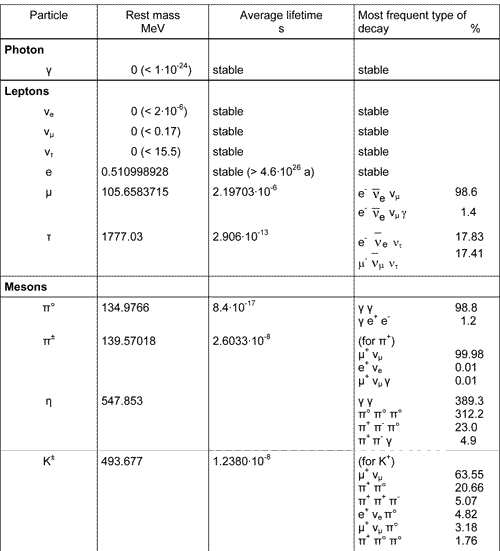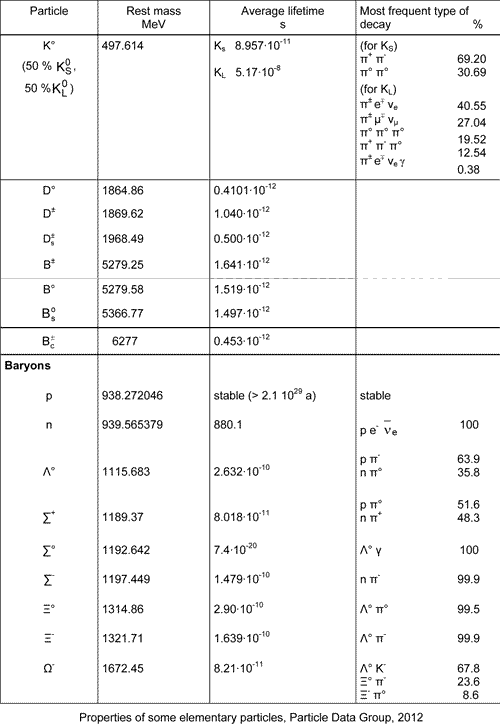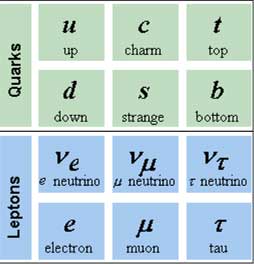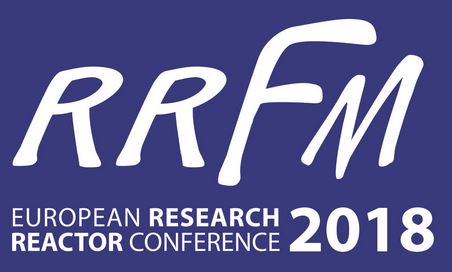Elementary particles
 scroll scroll 
Elementary particles refer to particles that cannot be easily recognized as a compound - in contrast to the nuclei of atoms. Within certain limits determined by the conservation rates, elementary particles can be converted.


The multitude of such „elementary particles“ – in addition to those listed in the table, a further 200 were found - led to the „invention“ and eventually to the discovery of the „quarks“ and subsequently to today's „standard model“ of elementary particles. This standard model consists of twelve parts - see figure - and the same number of antiparticles. Thus, the proton consists of two „up-quarks“ and one „down-quark“, the neutron of one „up“ and two „downs“, where the up-quark has a charge of +2/3 and the down-quark -1/3 electric elementary charges to meet the electric charge conditions.

Standard model of elementary particles
back
|
|

11 - 15 March 2018
Munich, Germany

30 September - 04 October 2018
Prague, Czech Republic |